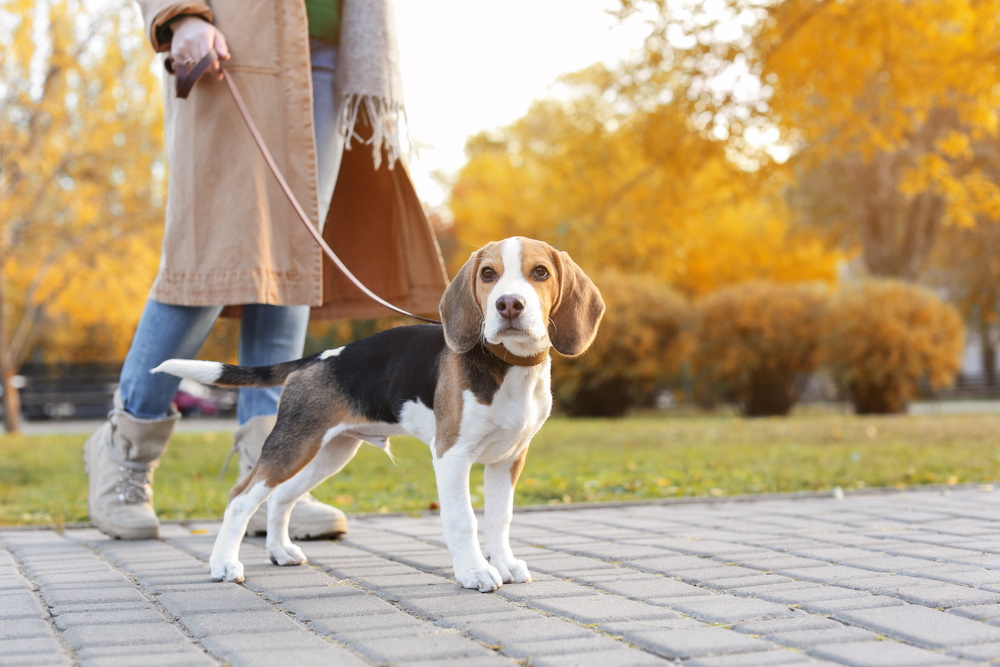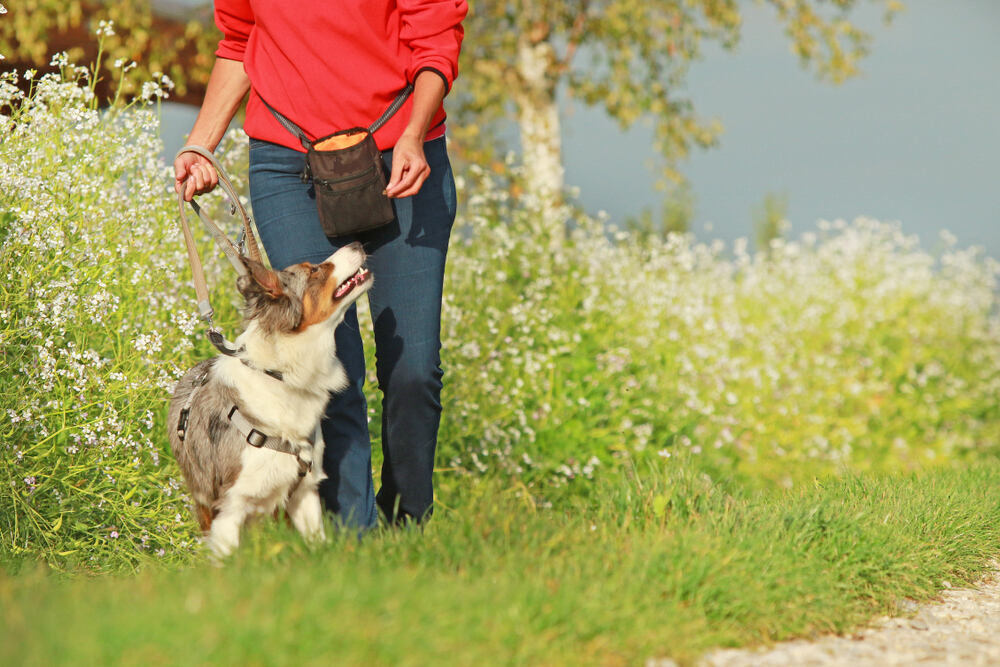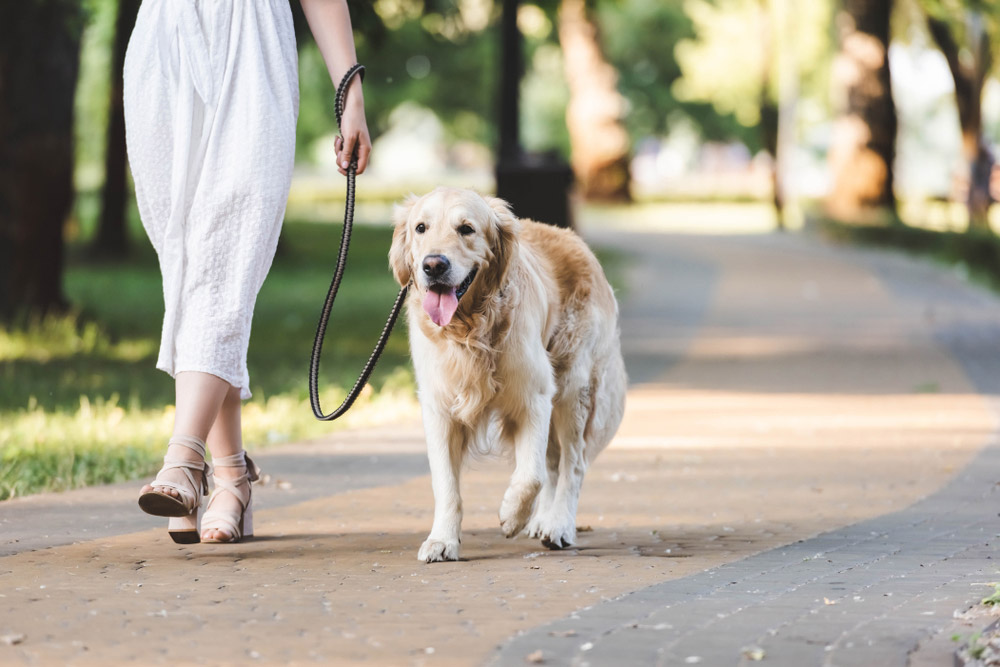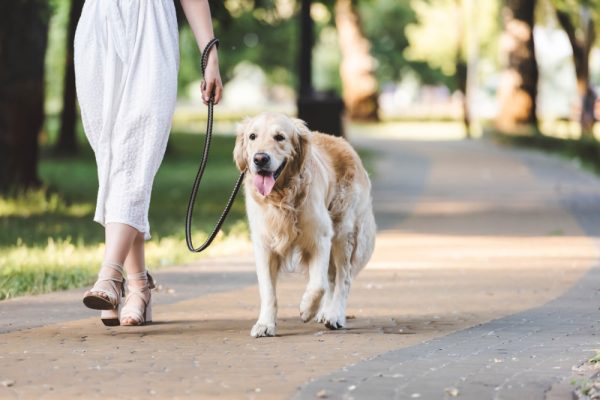While most dogs love going on walks, closely monitoring them during walks is important to ensure they’re not overexerting themselves. Dogs can definitely end up walking too much, and perpetual overexercising can lead to injuries and health issues.
It’s the dog owner’s responsibility to ensure their dogs get the right amount of exercise every day. Providing appropriate amounts of walking and other forms of exercise will help dogs stay healthy and enable them to continue enjoying their walks throughout their lives.

How Long Should I Walk My Dog?
There’s no simple answer to how many minutes of walking a dog needs per day. The amount of exercise your dog needs depends on a variety of factors. Factors include your dog’s age, breed, weight, energy levels, and any chronic health issues.
The best way to determine the length of your daily walks is to consult your veterinarian. Your veterinarian can perform a physical exam on your dog and recommend appropriate exercises and limits for how long your dog can walk.
Your dog’s ability to walk will also depend on environmental factors. If you live in places with hot summers and cold winters, you’ll have to adjust the timeframe of your walks. When the weather’s extremely hot, it’s generally recommended to walk your dog in the early morning or evening, when the temperature is lower. Your dog may also need frequent breaks in shaded areas when walking on hot summer days.

Signs of Too Much Walking
As you get to know your dog, you’ll start to notice several different signs that indicate they’ve walked too much. During your walks, pay attention to your dog’s body language. Your dog will probably slow down, lie or sit down, and may also pant heavily. You might notice limping, or your dog may simply refuse to go any further.
Make sure to check your dog’s paws regularly. Dogs that are over-exercising usually have paws that have experienced significant wear and tear. Their paw pads may be raw and red, torn, or be bleeding. You may also notice muscle soreness after returning from a walk or on the day after. Your dog may have difficulty getting up and going up and down the stairs.
Particular care should be taken with walking puppies, because their bones and joints are not fully developed. If a puppy is over-exercised, it can lead to joint and bone damage which may result in conditions such as hip dysplasia and arthritis. Ensure that if your puppy looks tired but doesn’t want to slow down, you pop it on the lead to force them to stop.

Tips for Safe Dog Walking
Along with being mindful of how many minutes you spend walking, there are several other things you can do to ensure safe walking. First, make sure to bring water with you. Dogs can get dehydrated and overheated on their walks, especially if the weather’s hot outside. Offer your dog water periodically throughout your walk.
When it’s particularly hot outside, opt for walks under shaded paths, or delay your walk until the evening. Make sure you and your dog stop to rest in the shade frequently. Don’t force your dog to continue walking if they’re reluctant to keep going.
If you live in a hot or very cold climate, you may want to invest in dog booties or paw wax. Dog booties will help your dog’s paws stay dry and prevent them from coming in contact with sidewalk salt or boiling hot concrete. Paw wax adds a layer of protection against both hot and cold surfaces.
Lastly, make sure you’re using equipment that is correctly sized. A correctly fitted dog collar will allow you to fit two fingers snugly between their neck and the collar. The same goes for dog harnesses. You should be able to fit two fingers between their body and the harness. Make sure that the harness is made with comfortable material to prevent chafing and rashes on your dog’s skin.

Conclusion
Pay attention to your dog during your walks so that they don’t overexert themselves and walk too much. Make sure to take plenty of breaks and offer them water, especially in hot weather. Knowing your dog’s walking limits will help them immensely in the long run, as it’ll prevent injury and ensure you two can enjoy many more fun walks together.
Featured Image Credit: LightField Studios, Shutterstock










